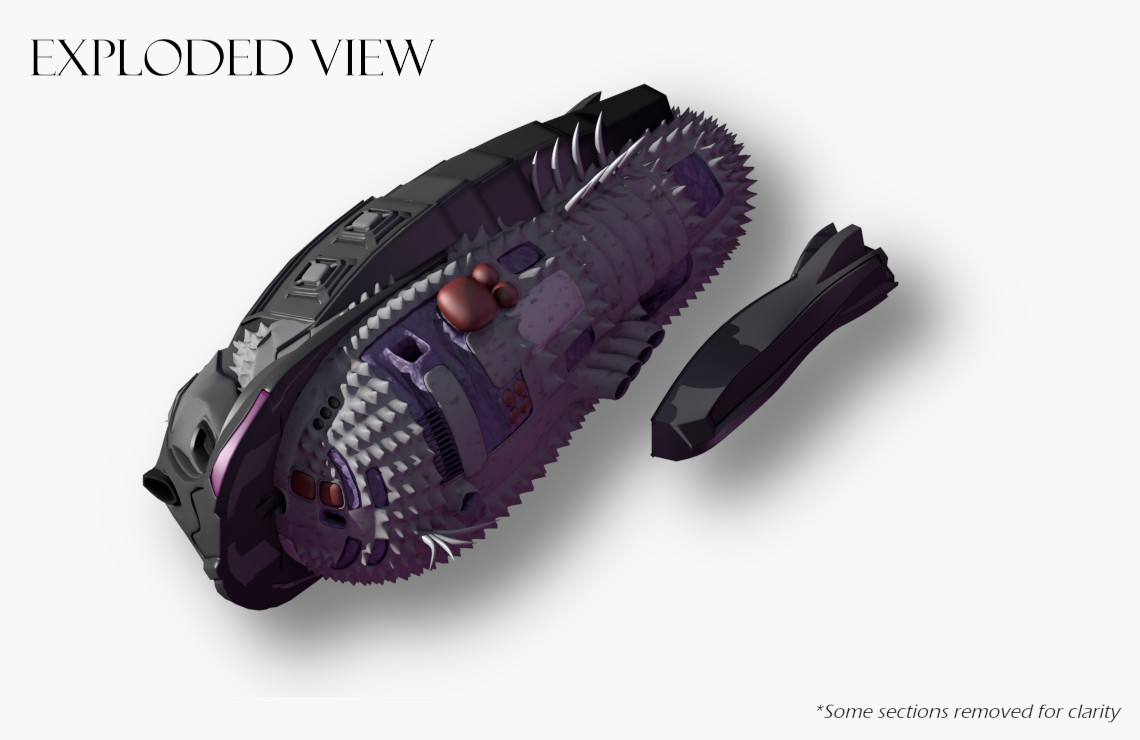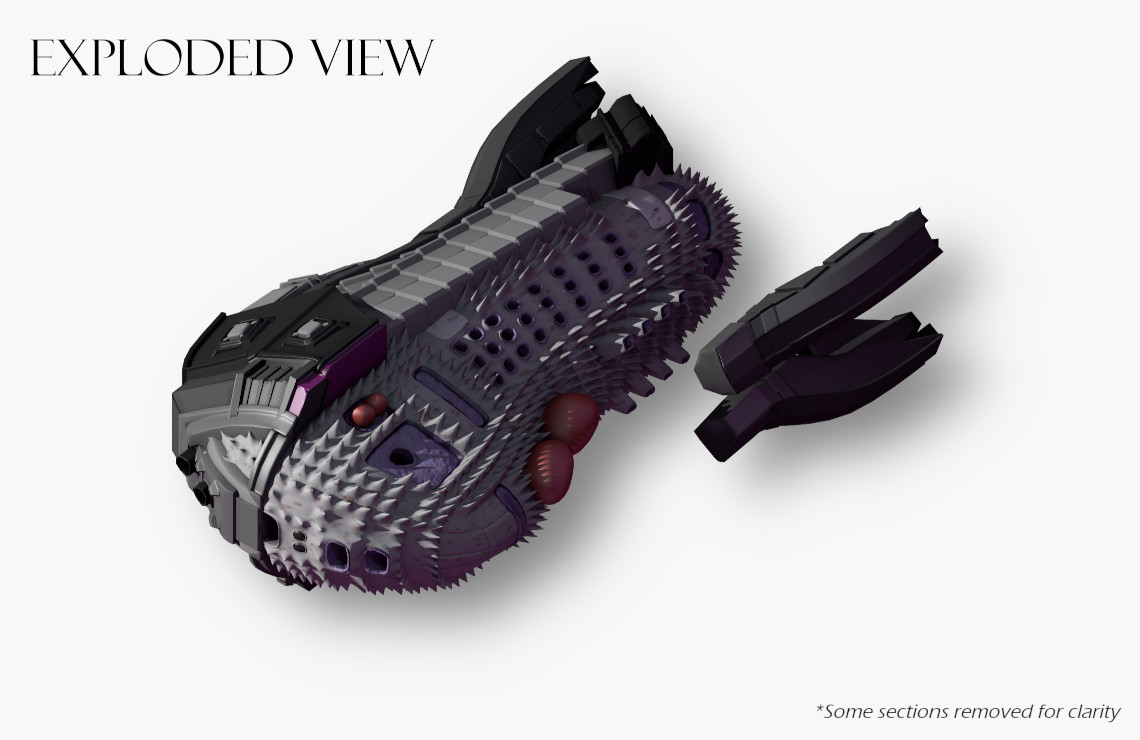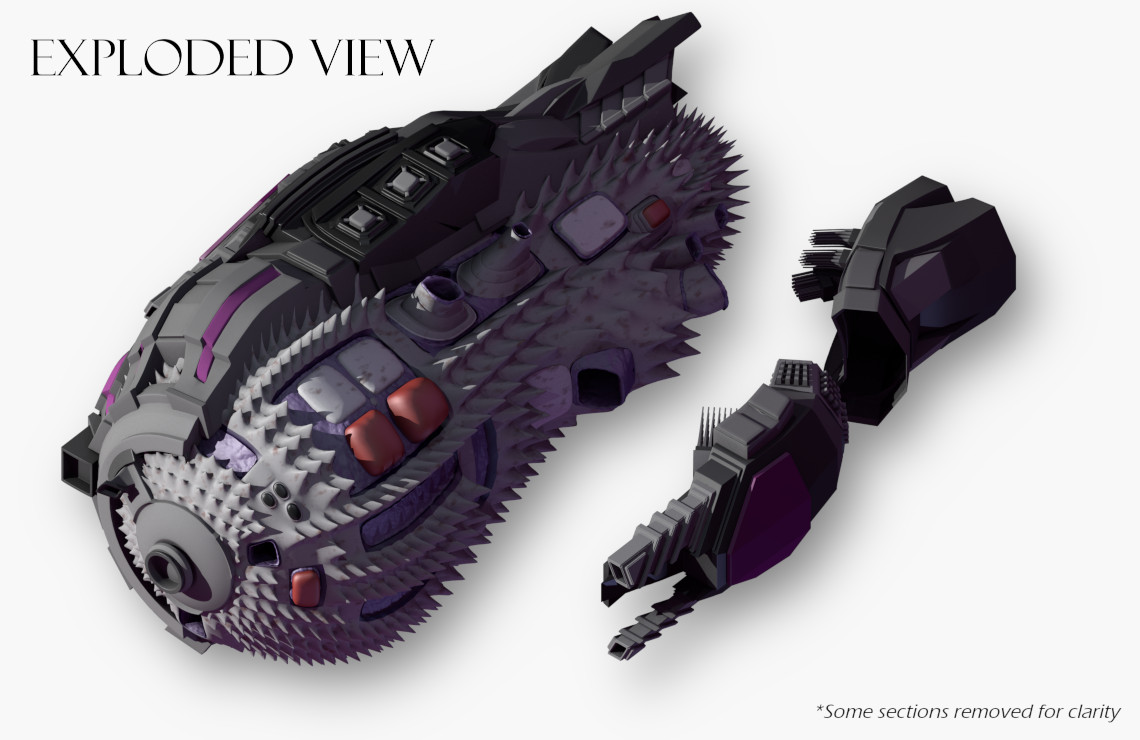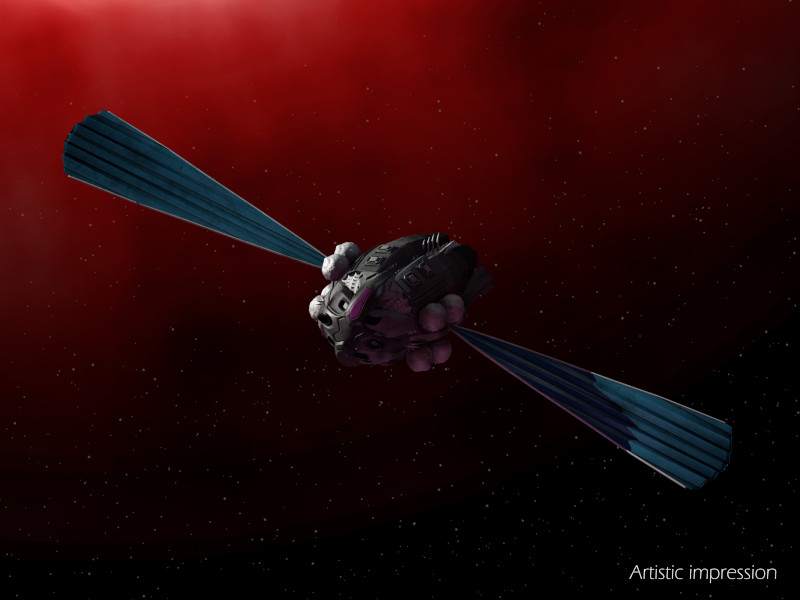02 May 2024
Beneath the shell
From the Watcher archives, decrypted and translated from records downloaded on Lateria’sei. The file describes a brief history of the Ka’het, as written by a Builder engineer three months before the first wave of insurrections.

Early concepts: the “super-sizing”
The story begins over two centuries before the first Ka’het saw the light; not when the proposal was first conceived, but when it was first realized, through a tech demo that applied what is known as “super-sizing” an organism. This super-sizing process led to the creation of a three meter long, half a meter wide worm, incapable of sustaining its own weight in a gravitational field or surviving on its own. Though its appearance would be much different from what followed, and it had no functions beyond eating and growing, nothing would have been possible without the breakthroughs of the super-sizing project - as a matter of fact, it wasn’t long after this that the Fetri’sei program began to make its first steps.

The Fetri’sei, and the exploration of deep space
It was around this time that, between the various departments of the interstellar authority, the ‘sei group was nearing their peak: managing over two dozen stations in the core systems (with three more in various stages of construction) and a number of smaller projects on the capital’s surface, they had grown far beyond their initial role of space platform operators and made many inside the government uneasy about the power they could exert. To break the hegemony that was starting to form, the ‘mar group was created, intended to take some of the most promising space-based projects and develop them to completion - for instance, the then-new program of automating a large part of the interstellar traffic through robotic spacecrafts and surface bases. The ‘sei group responded with a competing program, which, instead of automated spacecrafts, put super-sized organisms at the helm. These organisms were capable of space travel, exploration and self replication; thus, the Fetri were born.

With a lifetime measured in hundreds of years and an essentially infinite capability to replicate, it could achieve something only a few probes could ever do: exploring what’s beyond the hyperlanes, going further than ever before at sublight speeds and reporting back everything that was discovered. Which it did, in some way. Nearly a century after the program’s creation, the first Ka’sei reached a neighboring system, a g-type star disconnected from the hyperlane net, and was blown apart within seconds; its three sister probes, launched a few days behind the first, also quickly fell to enemy fire. The first result was panic. The second, instead, was the clear realization of the need for a way to defend from the rest of the universe and even strike back. The situation was dire, however.
With the Fetri’sei split between the ones reaching empty systems and the ones destroyed before ever replicating, the central government started deciding on an appropriate reaction. The ‘mar group, once touted to be on their way to become a juggernaut, had completely and publicly failed to deliver on the automation project, only completing a few subscale demonstrations and small surface facilities. With this option now unviable, the necessity of creating a super-sized organism-controlled warship soon became clear. Still anxious about the power of the ‘sei group, a new department was created for the purpose: the ‘het group, integrating the power systems and limited automation created by the ‘mar over the years with the super-sizing technology.
The Ka’het, and three-way strategy
As more details were being defined about the Ka’het and their function, a number of military doctrines started to be attached to the concept; for example, the entirely automated construction of the warships was selected on the basis of the Assured Continued Production, intended to keep the manufacturing lines open even in the case of a war with heavy population losses that would make it impossible to find enough qualified personnel. Whereas most war fleets are composed of by a large amount of different vehicles making sure to fill out every niche, it was decided early on in the development of the Ka’het architecture that this wasn’t desirable; the Ka’mar automated manufacturing technology was often either massive and reliable or small and slow, sometimes even unpredictable. Making a factory capable of building a wide variety of vehicles would have been absurdly expensive, so the focus was put on three, highly specific vehicles: the Maeri, the Telis, and the Vareti.
1: The Maeri’het

The smallest of the Ka’het vehicles is also the most unique. Developed as a long range scout, it has the capability of completely (but temporarily) shielding itself from all kinds of sensors, the workings of which are kept secret from everyone not directly involved with the project. Although its future use hasn’t been specified, it’s plausible to think they will follow the footsteps of the Fetri, traveling sublight to enemy systems outside the main cluster and destroying any foe trying to pass through - or perhaps, once the Celeatis research group succeeds in its mission, it could be the the first ship to pass through the collapsed anomaly. While away from a control ship the Maeri is mostly autonomous, deciding the best path forward without external input; however, it can also be given orders from its supervisors, as to ensure it will not interfere where it’s not supposed to.
2: The Telis’het

The main warship of the Ka’het fleet, a highly capable destroyer with a firepower rivaling that of a heavy warship, but much more maneuverable. The larger size, as well as the removal of the stealth technology, allowed the designers to expand all the internal systems, from the energy sacks to the vast arrays of shield generators; whereas a Maeri is perfect for the initial phases of a war, the Telis and Vareti can follow as soon as the enemy has been scouted to bring it to a quick end.
3: The Vareti’het

The capital ship every fleet needs, an incredible force with impenetrable shields, reactive armor, and a massive electric disruptor, nullifying in a few shots even the strongest generators. Its troubled development, caused from the unprecedented size of the super-sized organism and of the shield generators placed on top of it, caused it to end up with a somewhat different design from its predecessors compared to the original concept of an upsized Fetri; its capabilities have only benefited from this, however. Alone, this ship is formidable; in a fleet, it’s unstoppable. After leaving the main Ka’het station, much like the Telis, the Vareti start listening for orders and begin patrolling the entire cluster; this way they will be ready to intervene as soon as they’re called into action, without the undesirable delay given by the hyperlane system.
Appendix: unique capabilities of the Ka’sei and Ka’het

The four stages of Ka’sei replication
The self-replication capabilities of the Ka’sei start with the selection of a suitable asteroid for it to use; it will provide the ship with most, if not all, of the necessary materials for this activity and act as a base for the Fetri for the years to come. Once this has been done, and as long as the Ka’sei has sufficient resources, it will open the aft workstation to begin growing an organism completely identical to itself, moving only to gather additional materials as needed. In around 40 months the new organism becomes self-sufficient and can separate, first remaining connected to the original’s life support through additional umbilicals and then surviving completely on its own; in fact, during this phase the older Fetri will use the forward workstation to construct the hull and mechanical systems of the new organism, a phase which takes between 5 and 7 weeks depending on material availability. Two identical Ka’sei now exist, both equally as capable and ready to continue their mission. There was much internal debate during the development of the Ka’het about these systems, and whether they would be harmful or beneficial to the overall architecture; the exponential growth was considered by some to be essential to success of the fleet, while others found its size and added requirements unacceptable. In the end, the Assured Continued Production doctrine meant that the benefits of self-replication were seen as redundant.

Artist’s impression of a hibernated Maeri
Early concepts called for the Maeri’het to have incredibly advanced self-piloting capabilities, returning home automatically in case the main organism was dead but the overall systems were still working, or even reactivating after it was disabled to cloak and move to a safe space. Much of this was found to be undesirable, unfeasible within the available space, or otherwise not within the realm of possibilities, but some traces of this confused era remained as what was called the Ka’het Hibernation System. During the initial time period in which the entire fleet remains stationed inside the main cluster, it is expected that a number of Maeri organisms will be lost to testing, manufacturing defects, or perhaps old age; due to the high value of these vehicles, as well as the necessity of preventing the stealth system from falling into unauthorized hands, a small, inflatable device has been conceived which can maintain the Ka’het alive enough for it to be rescued and towed back to a nearby station, where it can be emptied and cheaply reused for a new one.